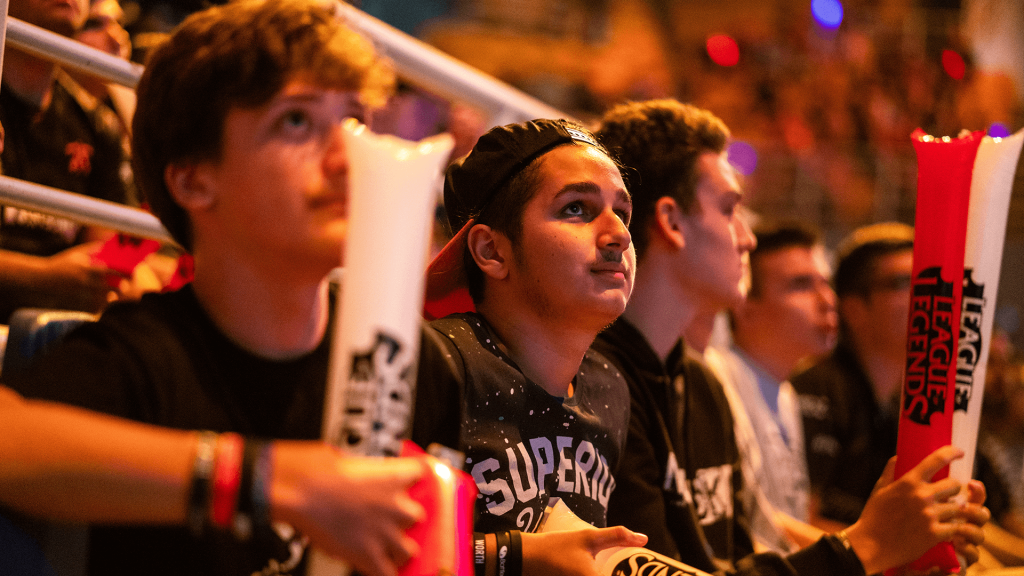
The cornerstone of any esports scene is the game. That’s why a publisher’s thoughts regarding competitive gaming are fundamental to the future of the sector. Figuring out what works for a title to find its place in the esports pyramid is crucial.
The answer, however, is not easy to find. Even the Guide to Esports, published by the Interactive Software Federation of Europe (ISFE), emphasises that there is no straightforward answer before mentioning competitive mechanics, learning curve, the presentation for viewers, and services for players, tournament organisers and casters.
To explore the topic, Esports Insider spoke to one of the industry’s biggest players: Riot Games. One of the world’s most successful publishers, Riot has established solid multi-regional esports scenes with titles like League of Legends and VALORANT. Moreover, the company is also developing an ever-growing Wild Rift scene. As a result, the company has become a reference in competitive gaming.
Graham Ashton, Esports External Affairs Manager at Riot Games EMEA, spoke about what, in the company’s opinion, makes a game an effective esports title.
“From the development side, you need to have an engaging gameplay concept that, even if working within a historically successful genre, needs to offer some unique experience that would encourage dedicated, high-level players,” said Ashton.
“This must be accompanied by a fair ranking system to help competitors settle into an appropriate skill level, and a client that supports the creation of private games and custom tournaments.”
The publisher mentions competitive balance of a game as the main challenge to be overcome. That’s why new features, characters and abilities are constantly implemented in Riot’s esports titles, part of a constant effort to not let the game stagnate and become repetitive. “A balanced [development] team needs to be adept at finding a comfortable middle ground between commercial and player experience needs,” explained Ashton.
However, granting that game concepts are suitable for competition does not build a strong scene by itself. As such, Riot Games highlights community management efforts as instrumental for a title to grow in esports.
“You want gamers to feel like they are part of something unique,” said Ashton. “That can only be achieved by growing a community organically through a mix of content, social engagement, and transparent communication from your development team.

“No esport can succeed without an amateur/grassroots scene, and so there needs to be clear guidelines and tools to help third-party tournament organisers bring their games to local competitors and audiences.”
Riot Games is a reference for a publisher that closely supports and promotes its esports scenes. According to the company, this commitment helps to bolster competitive integrity. For all its titles, this includes disciplinary decisions at the highest tiers of professional play, plus third-party tournament organisers partnered with the publisher.
Any competitive scene means nothing if there aren’t fans willing to watch it. Therefore, the broadcast of matches was also a theme approached by Riot. According to Ashton, streaming esports titles is “essential to their longevity.”
Ashton mentions the accessibility of a game from a broadcast standpoint as part of the fundamentals to making a great esport. Additionally, the publisher also spoke about its new policies adopted in 2020 regarding streaming its official competitions by third-party creators.
Regarding commercial strategy and the importance of promoting esports scenes for its games, Ashton mentioned the benefits of having a video game become equivalent to a spectator sport.
“It encourages a set of high-level players to spend considerable time honing their skills on your platform. Their competitive achievements bring in more viewers who in turn might become fans of your game themselves, if they are not already.”
However, the publisher highlights that it aims to build a “multi-generational fanbase” as well as foster local communities and build a strong ecosystem.
“Fans must feel represented and our partners should believe and invest in the future of the competition,” Ashton said. “We can’t achieve this if we treat esports purely as a marketing endeavour.
“All this in mind, a forced esport will struggle to succeed, and the journey from new game to thriving competitive ecosystem doesn’t happen overnight. There are a number of factors here, predominantly attracting and maintaining a player base who will grow and eventually form a strong esports community and, if you’re truly successful, multiple generations of talented players.”
To learn more about the fundamentals of esports, ISFE’s Guide to Esports is a starting point to understanding all the players and factors involved in this market, as well as how its dynamics work.
Supported by ISFE
